Cabrogal Country
Lurnea Community Centre is on the land of the Cabrogal Clan of the Darug Nation who are the traditional custodians of the land that now resides within Liverpool City Council’s boundaries. This land was also accessed by peoples of the Dhurawal and Darug Nations.
Some sources report that Lurnea is an Aboriginal word for “resting place.”
Hillview Soldiers’ Settlement
In 1920, the Commonwealth Government purchased 120 hectares south of Liverpool to create Hillview Soldiers’ Settlement. The land was divided up into 40 small poultry farms. These farms were intended to rehabilitate and reward returned WWI servicemen.
Hillview Soldiers’ Settlement was quickly filled with 34 returned service men. Originally the poultry farmers had to market their produce through the Government, but in 1924 they established a co-op store in the area that is now Phillips Park. This allowed them to collectively buy feed and market their produce together. However, only a year later the Hillview Co-operative Society went into liquidation.
Many of the new resident soldiers had little technical knowledge of poultry farming. By 1929, the inadequate size of the farms, lack of training and difficult loan repayment terms led many to walk off their farms.
A few original poultry farmers, such as Francis Parnell Doran and Herbert Walman, have streets named after them in Lurnea. By the early 1950s, there were about 21 poultry farms left in Lurnea.
![Liverpool subdivision plans [Cartographic material] Liverpool subdivision plans [Cartographic material]](https://mylibrary.liverpool.nsw.gov.au/__data/assets/image/0015/260331/Liverpool-subdivision-plans-Cartographic-material.jpg)
Liverpool subdivision plans [Cartographic material]
"We lived at Hillview Soldier Settlement and my husband was reared amongst sheep and didn't know the first thing about chickens. They were in brooders where you used to have to stoke them up, coke and you'd either get them too hot, there was a thermometer there, but if you get the chickens too hot, they'd die, or they would be too cold. We didn't know anything about it, and I was worried, we couldn't pay the feed bill, and all the chickens were dying… [we only had the farm] long enough to go broke and then we walked out.” - Linda for Looking Back at Liverpool, 1985.
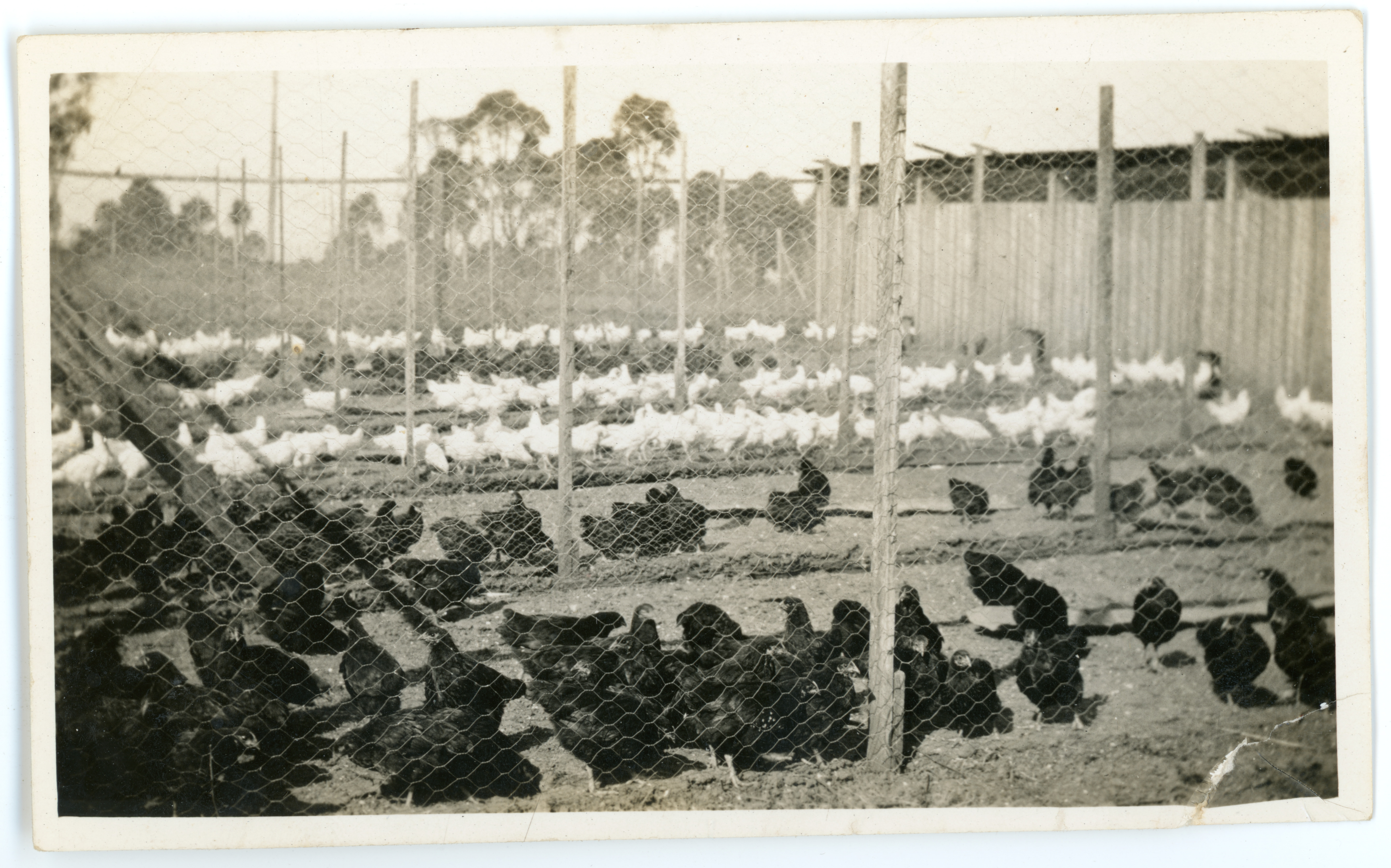
Clarence William Philips’ poultry farm at Lurnea, circa 1936. Clarence had a poultry farm on West Street in Lurnea that was originally part of the Hillview Soldiers Settlement. Photograph by Clarence Philips. Image courtesy of Margaret James and Julie-Ann Cowan, Liverpool City Library Heritage Collection.

Letter head used by Robert Wheeler for his poultry farm business. Gift of Vicki Andrews, Liverpool City Library Heritage Collection.
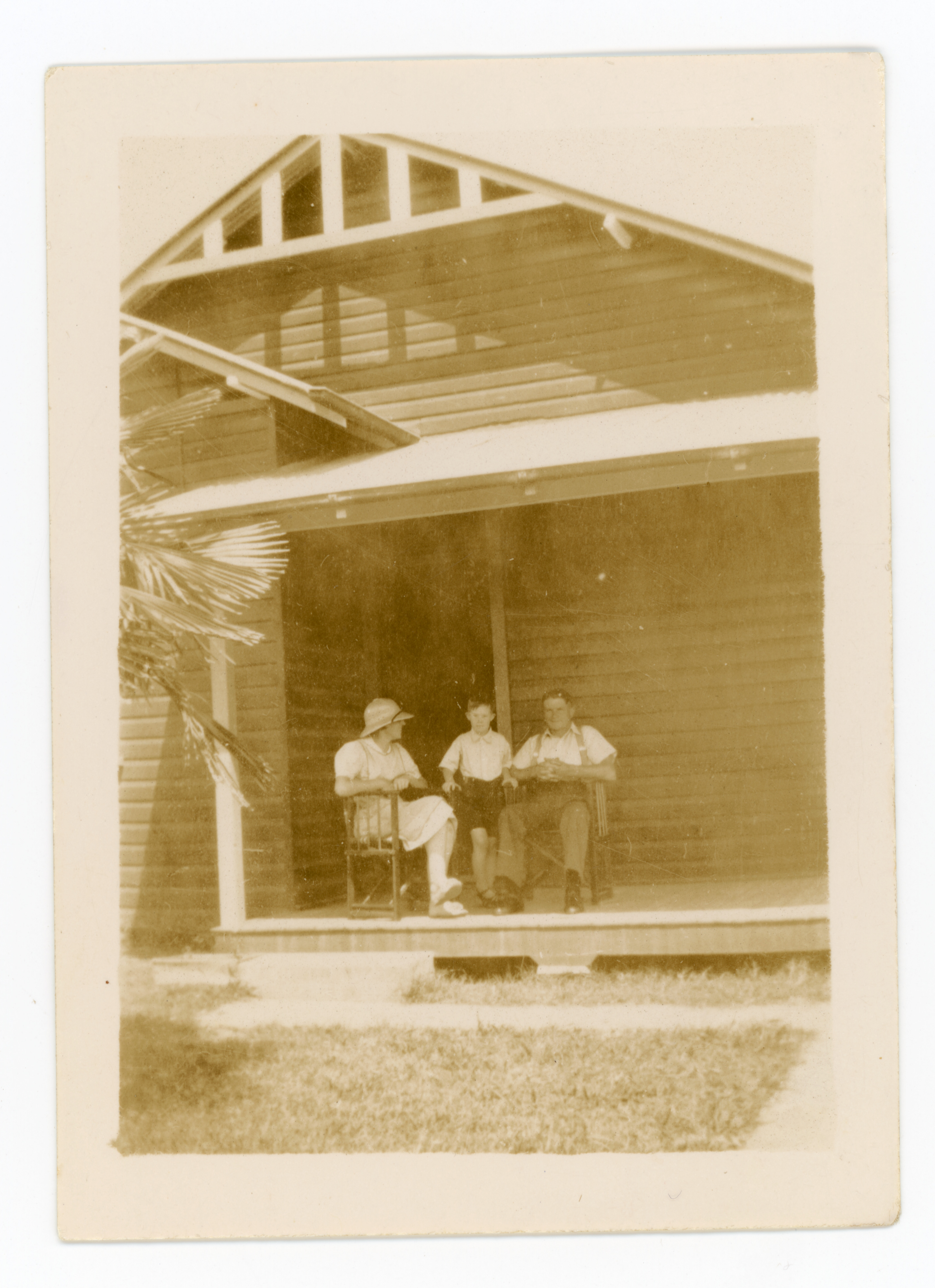
Margaret Dorothy Phillips and Clarence Pearce Phillips with Clifford Percival Jenner (child) at their home at West Street, Hillview in 1939. Image courtesy of Margaret James and Julie-Ann Cowan, Liverpool City Library Heritage Collection.
The house was typical of those built as part of the Hillview Soldier’s Settlement. It was a brown weatherboard house with a corrugated iron roof. It had two bedrooms, a lounge room with fireplace, kitchen with fuel stove and there was a vegetable patch in the yard. With their own vegetables and eggs, and a dairy up the road at Mr. Fletcher’s, the Phillips family were largely self-sufficient.
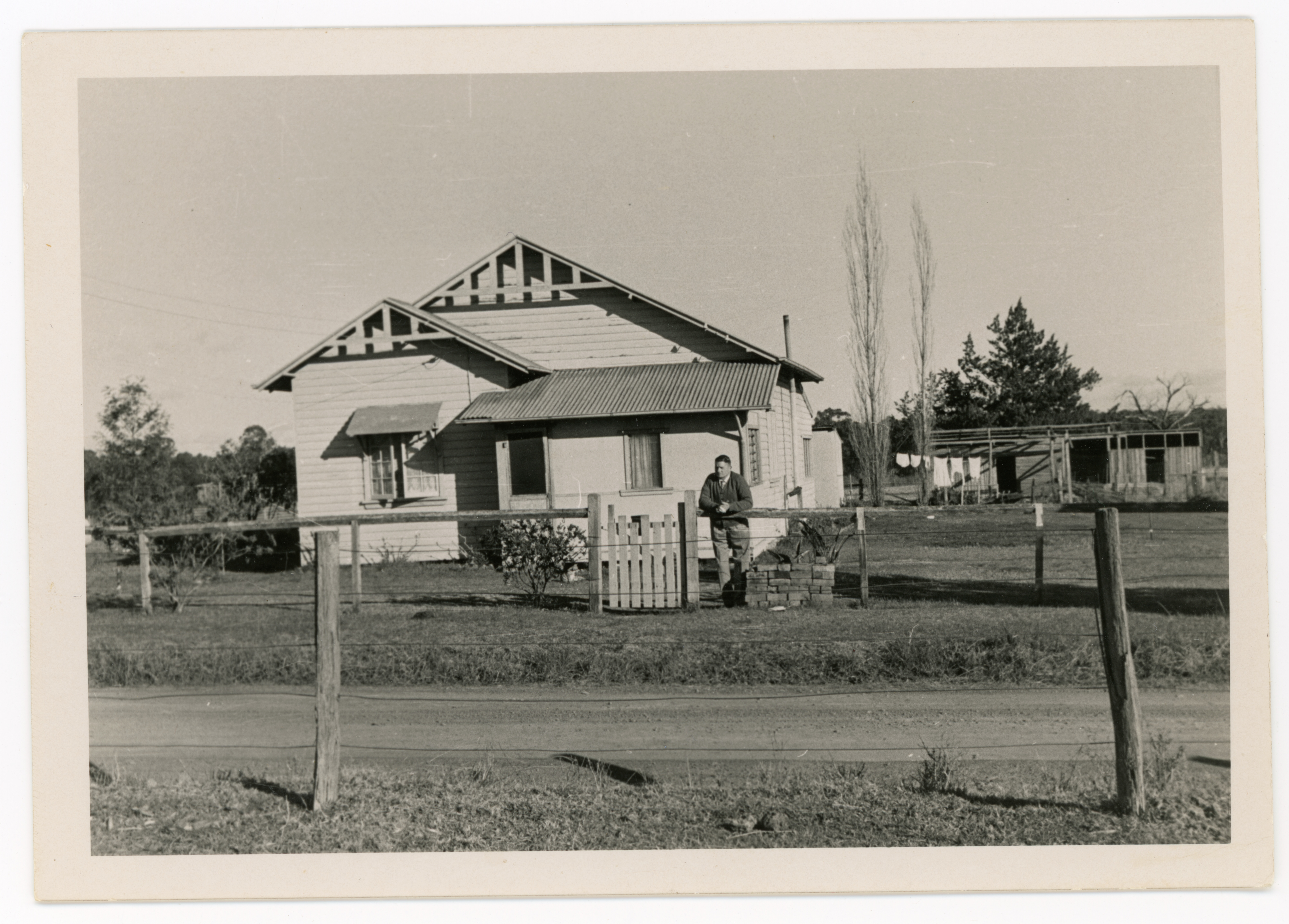
Clarence Phillips leans on the front fence of West Street, Hillview, circa 1950.
Image courtesy of Margaret James and Julie-Ann Cowan, Liverpool City Library Heritage Collection.
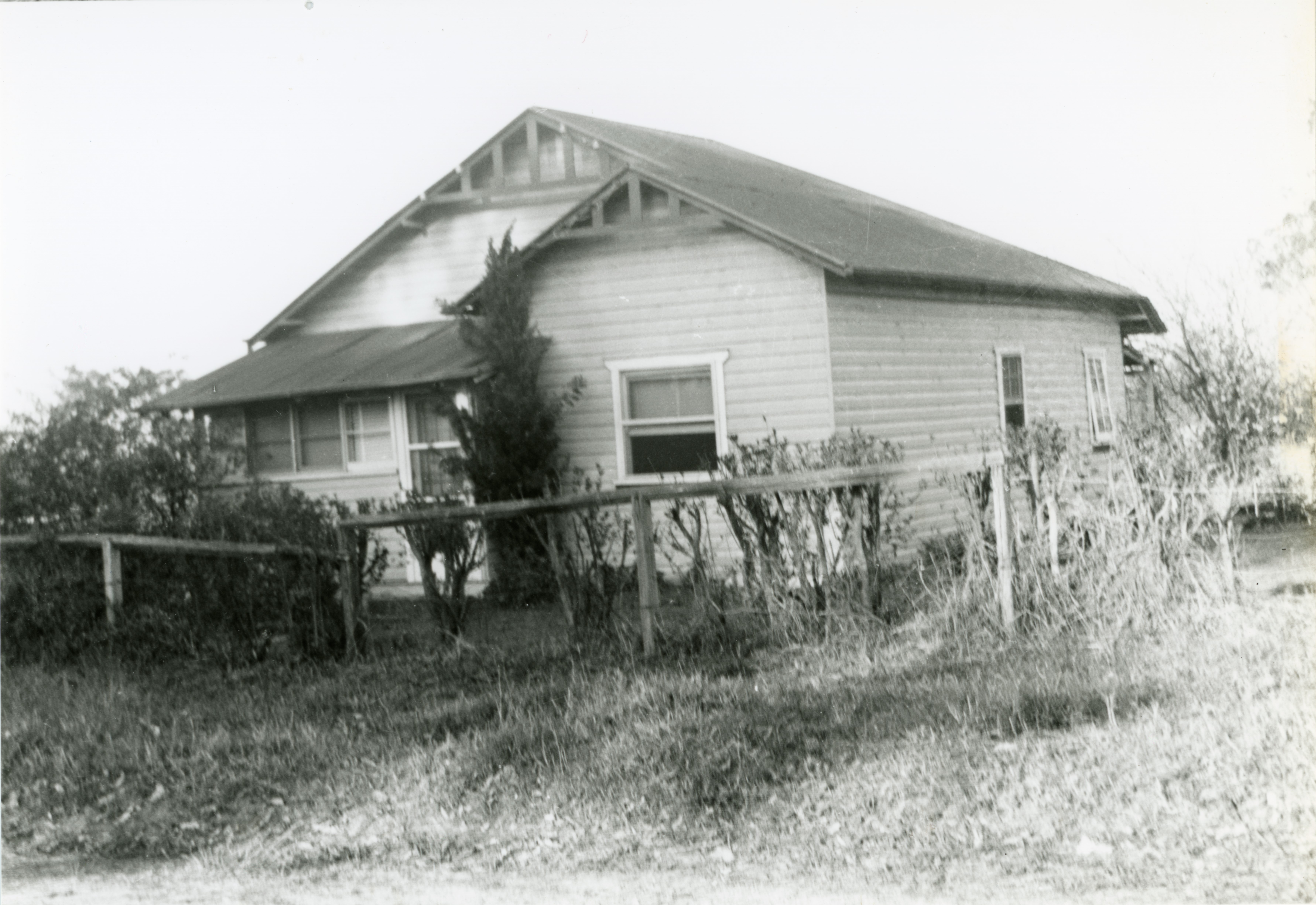
106 Hill Road, Hillview, circa 1950.
Gift of Vicki Andrews, Liverpool City Library Heritage Collection.
Vicki Andrews (nee Brain) has lived in the suburb of Lurnea, Liverpool, since the 1950s. She grew up in a weatherboard house at 106 Hill Rd. Her parents, Gordon Brain and Dorothy Nell Brain originally purchased the 5-acre block and home as a poultry farm and business from Robert Wheeler in 1950. In 1955 the N.S.W. Housing Commission froze their land for resumption for the purpose of public housing. After 4 years their land on Hill Road was resumed for £1,450 per acre. The Brains retained the dwelling and land appurtenant to the house.
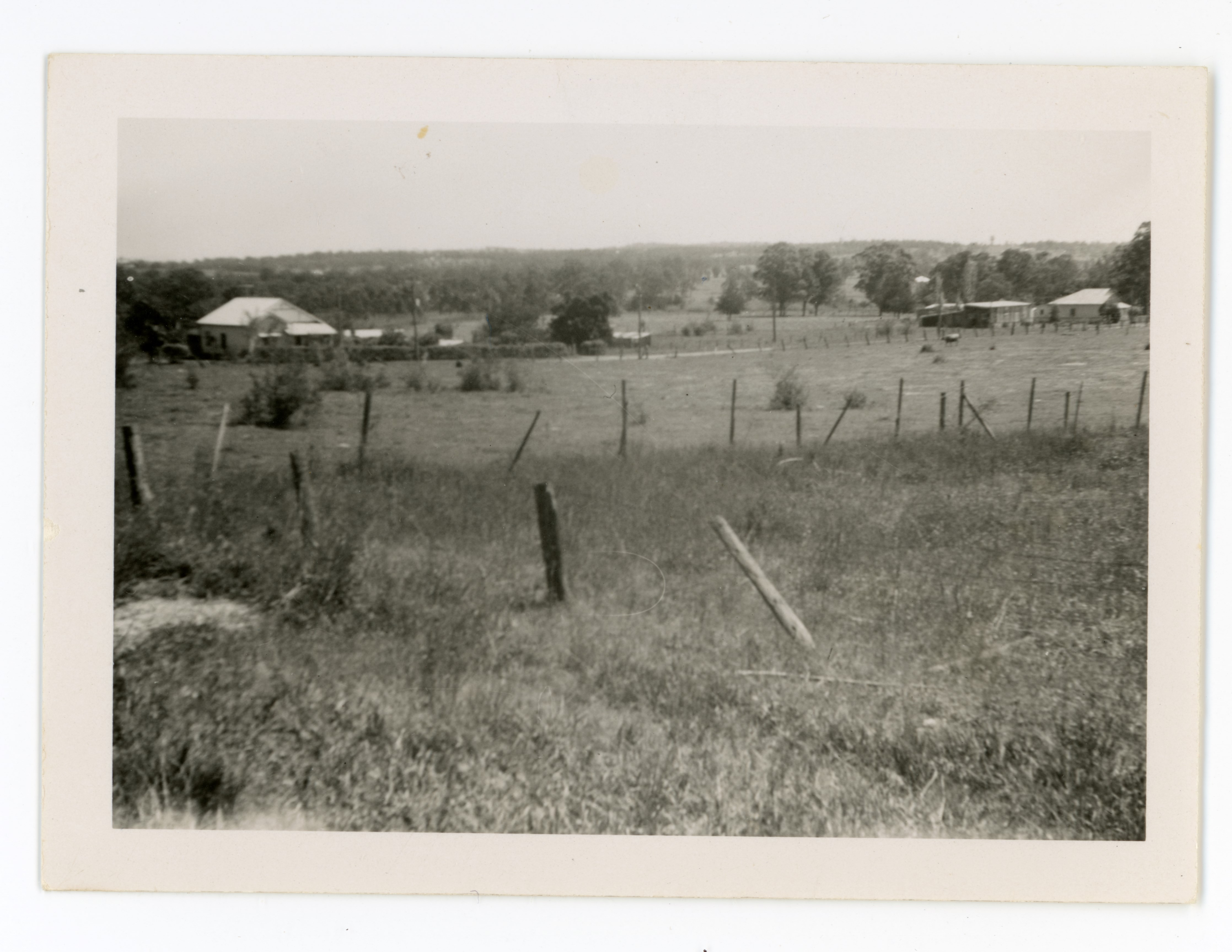
Looking from Jedda Road to West Street, Hillview circa 1955. Photograph by Clarence Phillips. Image courtesy of Margaret James and Julie-Ann Cowan, Liverpool City Library Heritage Collection.
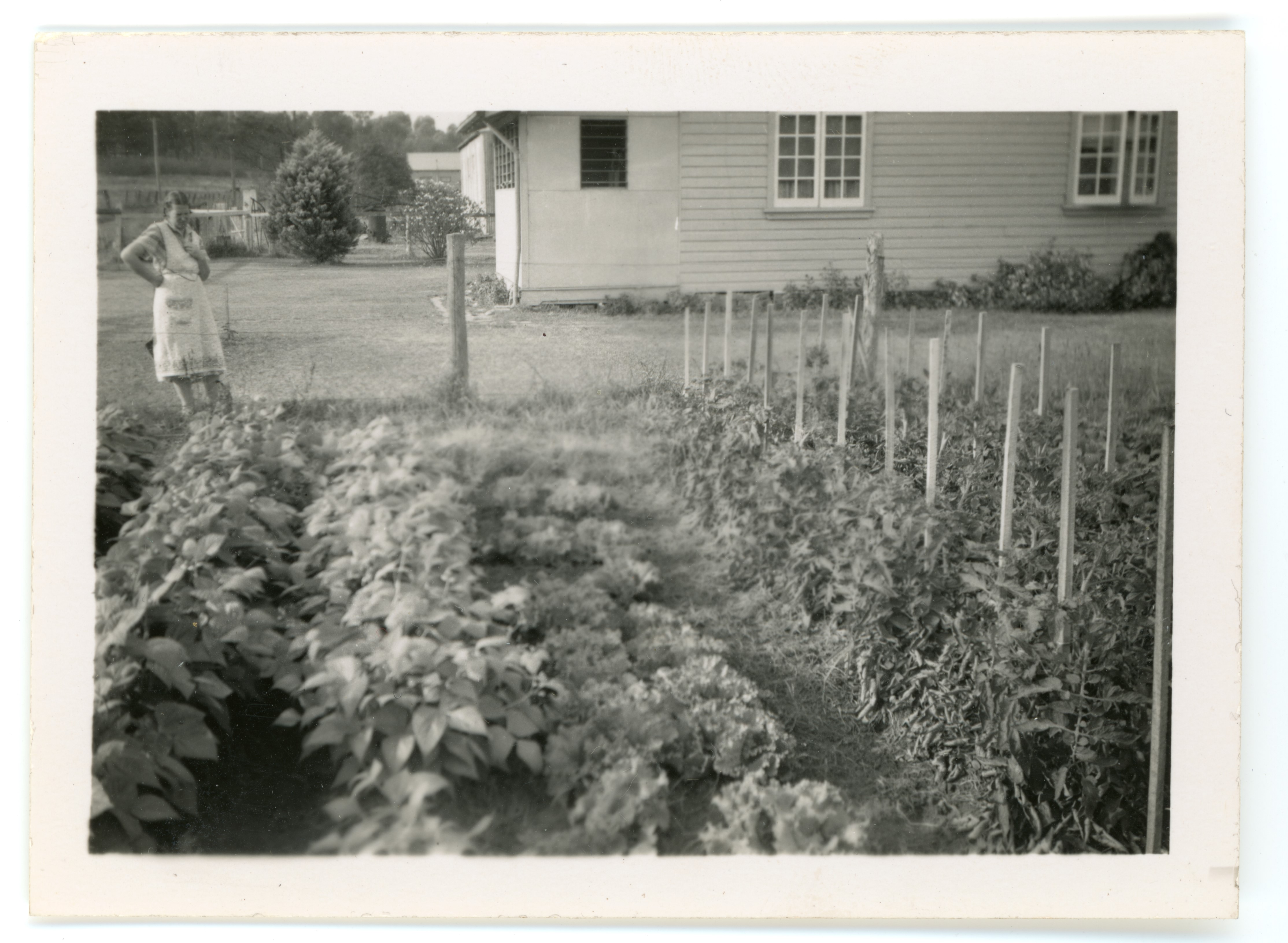
Vegetable patch in the side yard of 21 West Street, Hillview, where the Phillips family lived. Margaret recalls that her dad “picked a cabbage and Mum had to go and get the wheelbarrow, because it was so big my father couldn't carry it.”
Photograph by Clarence Phillips. Image courtesy of Margaret James and Julie-Ann Cowan, Liverpool City Library Heritage Collection.
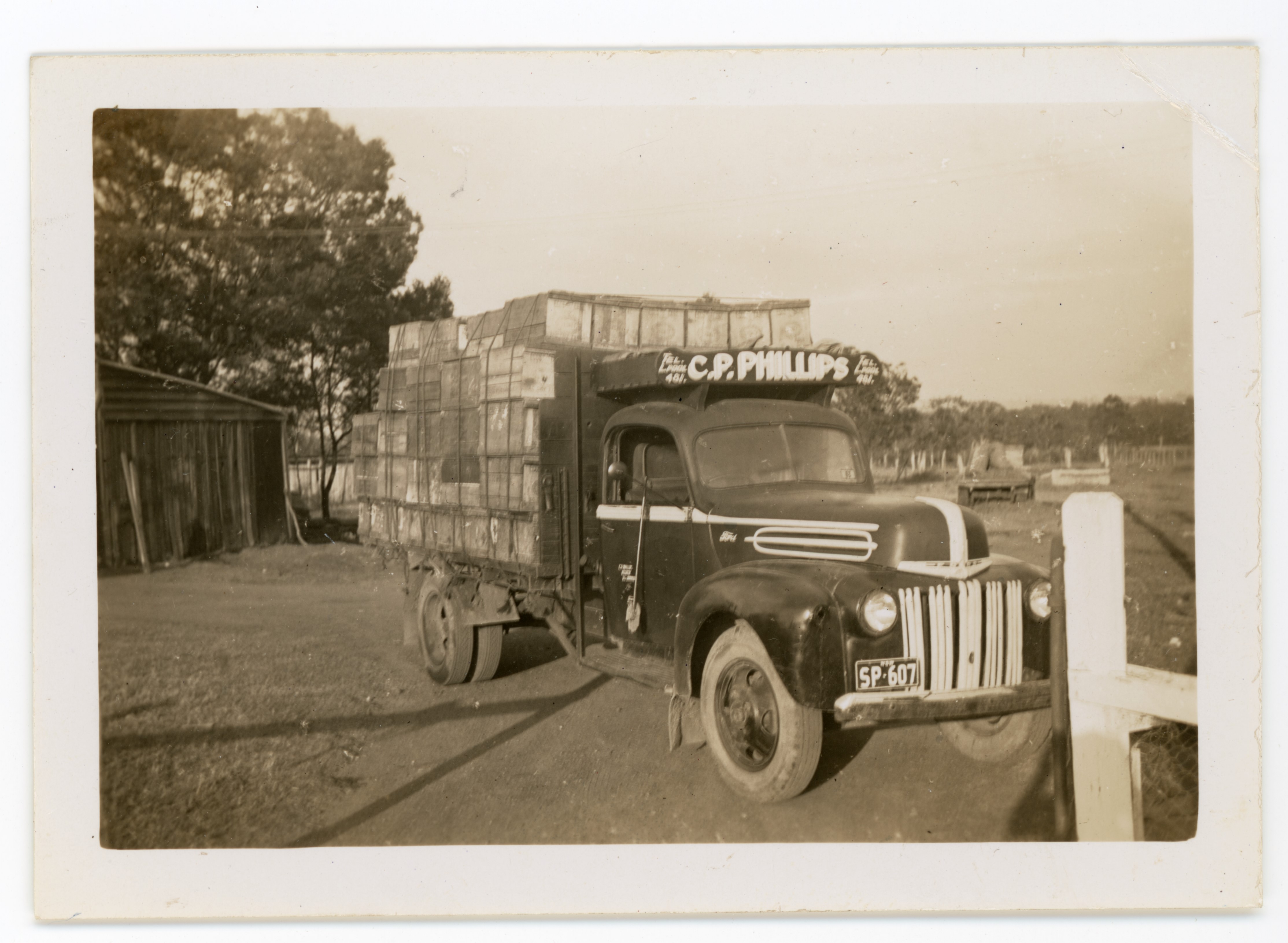
Clarence Phillips’ truck loaded up with egg-carrying boxes on his property in Hillview, circa 1940s. Clarence Phillips was a carrier for the poultry farms and market gardens in the area.
Photograph by Clarence Phillips. Image courtesy of Margaret James and Julie-Ann Cowan, Liverpool City Library Heritage Collection.
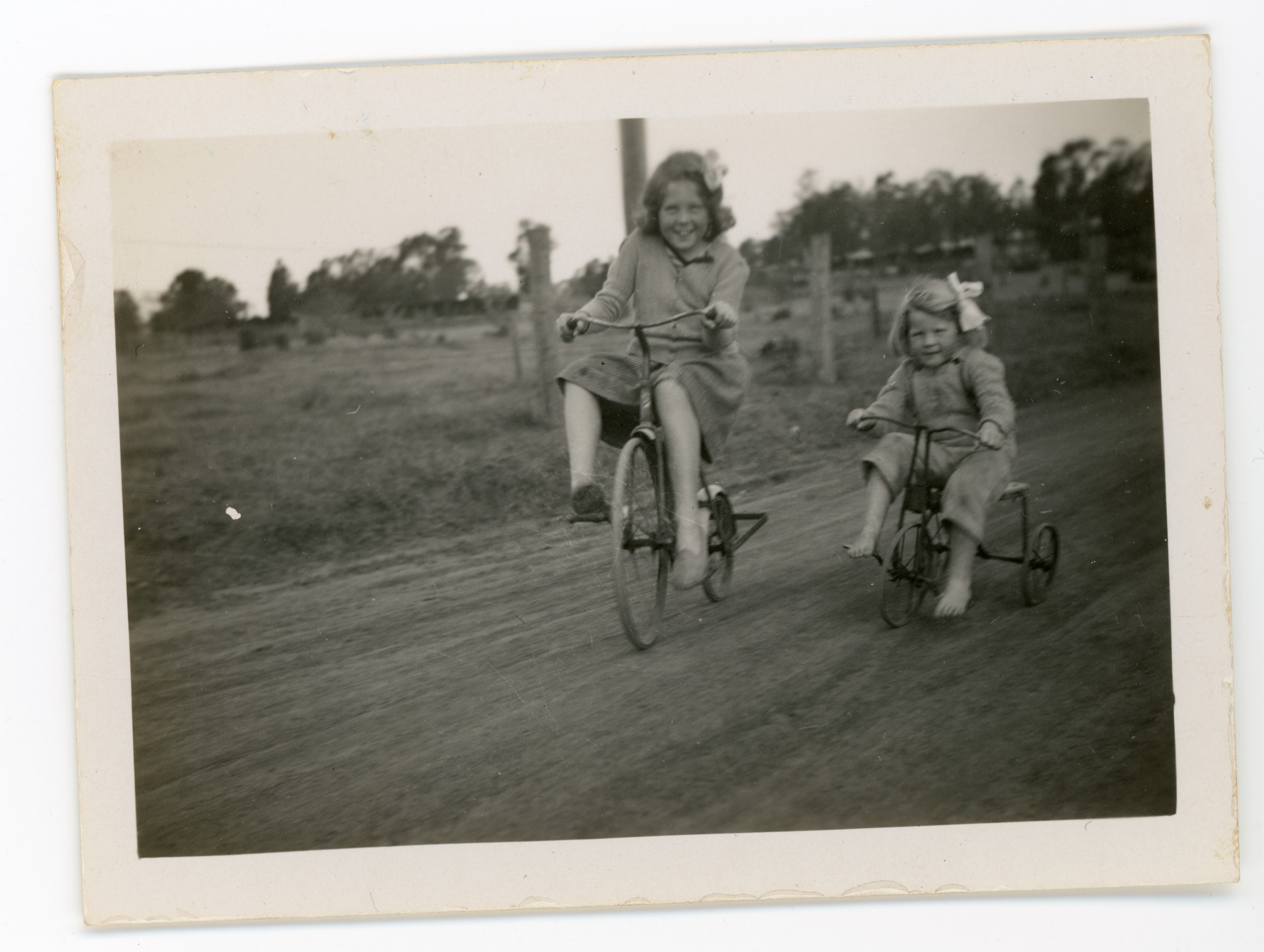
Sisters, 6-year-old Margaret James (nee Phillips) and 3-year-old Helen Simpson (nee Phillips), ride their bicycles down West Street, Hillview, 1947. Photograph by Clarence Phillips. Image courtesy of Margaret James and Julie-Ann Cowan, Liverpool City Library Heritage Collection.
During her childhood, Margaret remembers that “growing up, we had a baker that had a horse and cart. Used to come, you'd buy the bread from the baker. The milkman. I think the milk wasn't pasteurized. My mum used to hang a billy on the front fence, and the milkman would come around with the ladle and a can of milk. And we didn't have a fridge. I can remember when I was little the ice man used to come with a block of ice and bring it in, put it in the ice chest and off he'd go.” - Margaret James for Learning Lurnea Project, 2023.

Gordon Brain milking his cows at 106 Hill Rd, circa 1950s. Gift of Vicki Andrews, Liverpool City Library Heritage Collection.
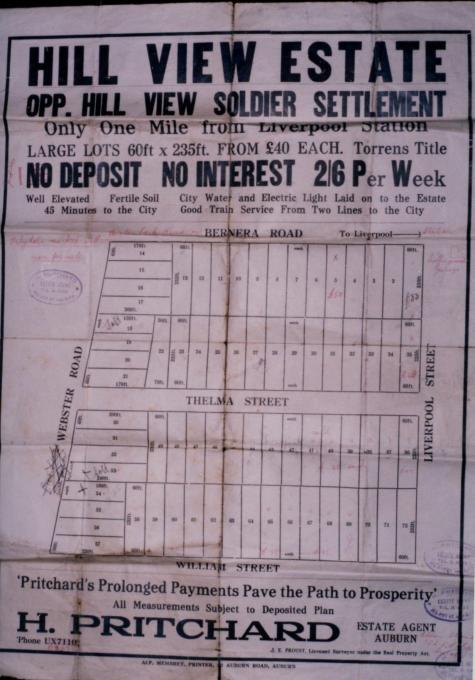
Map of Hillview Estate
Hillview Estate was an addition to Hillview. It became known as Bag Town to some Liverpool residents as life became hard for some in this area.
“Out towards Hillview, during the depression years, when men were losing their jobs and their homes, to provide shelter for their families, they built these little humpies. They were made out of bags and mud and this section we used to always refer to, as "Poverty Hill" or "Bag Town" – Enid for Looking Back at Liverpool, 1985
“There were a lot of little huts out at Hillview. Just little bag humpies and tin huts and opened up kerosene tins, anything they could build a house out of. I did quite a lot of work among the people out there. And I remember one time it was very wet weather and there was one family the husband was lazy, and not a very good man. When I went in, the place was lined with hessian and it had fallen away-, you had to get down under this hessian, and I said "look can't you get that up" and he said "it falls down again", and I got up and held and tried to get him to take this hessian up, so that we could go backwards and forwards without creeping under it. At that time, I think he had two or three children and most of the people had dug trenches round the outside of their little tents or house whatever you'd like to call them, to keep the water out. He didn't, the water was coming in. He'd just dug a drain across the middle of the room and the water ran down it. And this woman was having a baby in just a little curtain division.” – Nurse Agnes for Looking Back at Liverpool, 1985.
From Hillview to Lurnea
In the early 1950s, the Housing Commission of NSW decided to redevelop Hillview into a residential area. By 1967 there were 946 new Housing Commission homes built, as well as new shops, schools, a larger community hall, and improved bus services.
Lurnea Primary School opened in 1961 and Lurnea Public High School opened in 1965.
In 1962 the St Francis Xavier Catholic Church was built and in 1975 St Francis Xavier Catholic Primary School opened.
Many residents during this period worked at the Cable Makers factory.

Lurnea Public School, circa 1966. Photographer unknown. Liverpool City Library Heritage Collection.
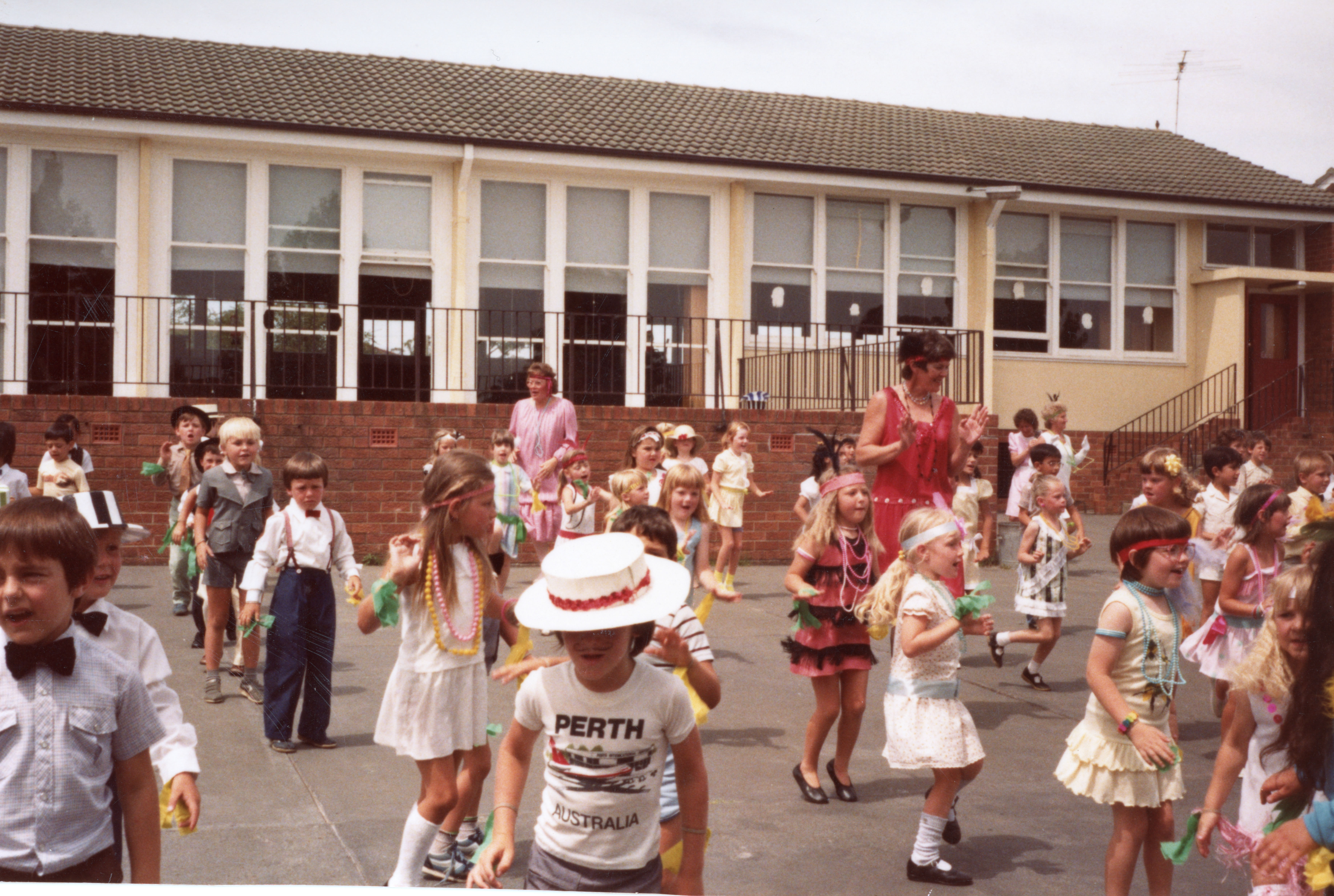
Parade day at Lurnea Public School, 1984. Gift of Jadwiga Krejza, Liverpool City Library Heritage Collection.
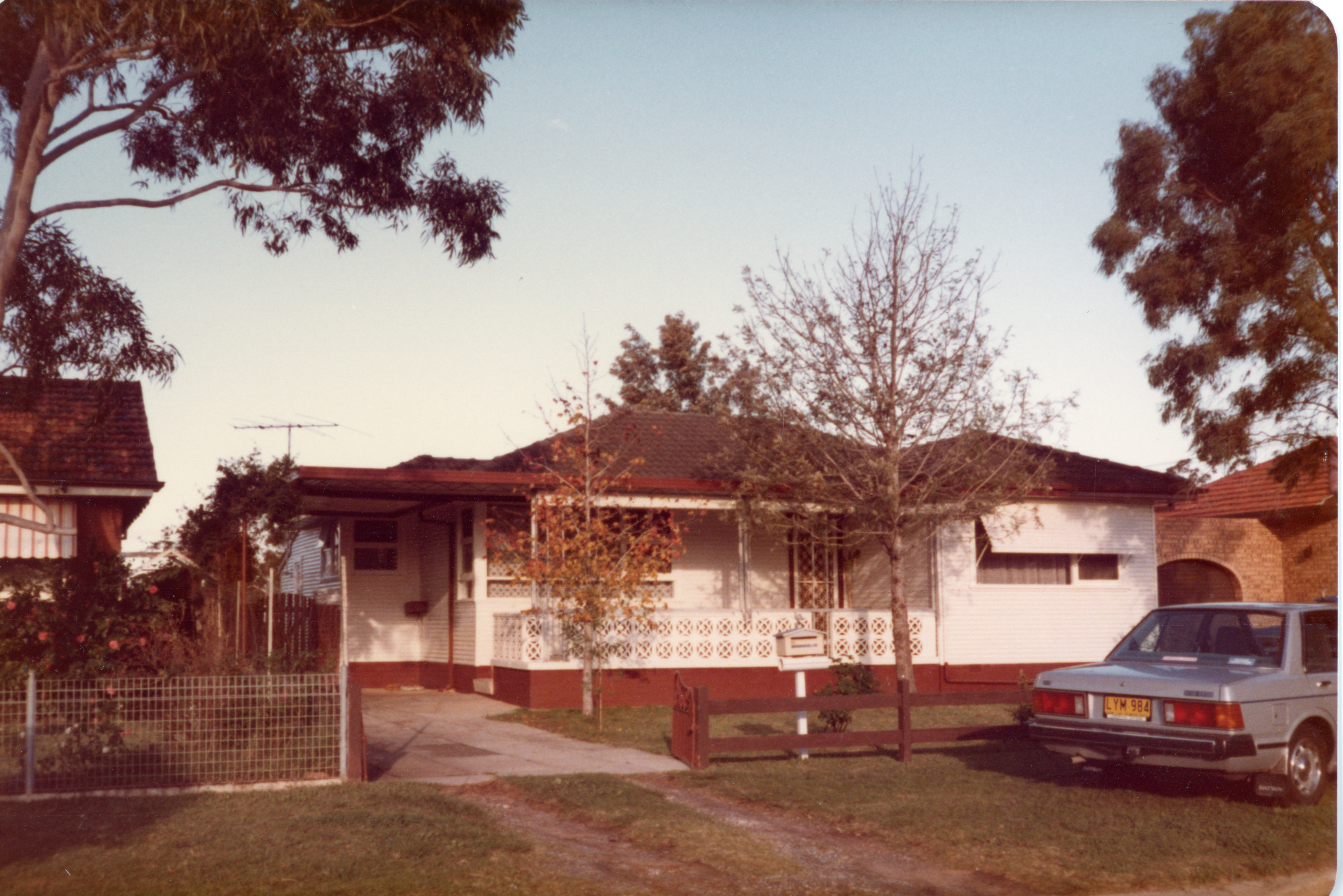
61 Weir Crescent, Lurnea, 1982. Gift of Jadwiga Krejza, Liverpool City Library Heritage Collection.
Jadwiga Krejza migrated to Australia from Kielce, Poland in June 1978 and moved to 61 Weir Crescent, Lurnea in 1982. After moving to Lurnea, Jadwiga worked at Liverpool Primary School as an ethnic teaching aid. She is now the Multicultural Services Librarian at Liverpool City Library. Jadwiga first found it difficult moving to the suburbs as a stay-at-home mum.
“We moved in in October 1982. I was expecting my second son. He was born in January 1983. And we bought the house, so that's when we moved in. And I cried. Because coming from in the city, here was so sad. It was not it. You know? But its good now.” – Migrant Oral History Project, 1998
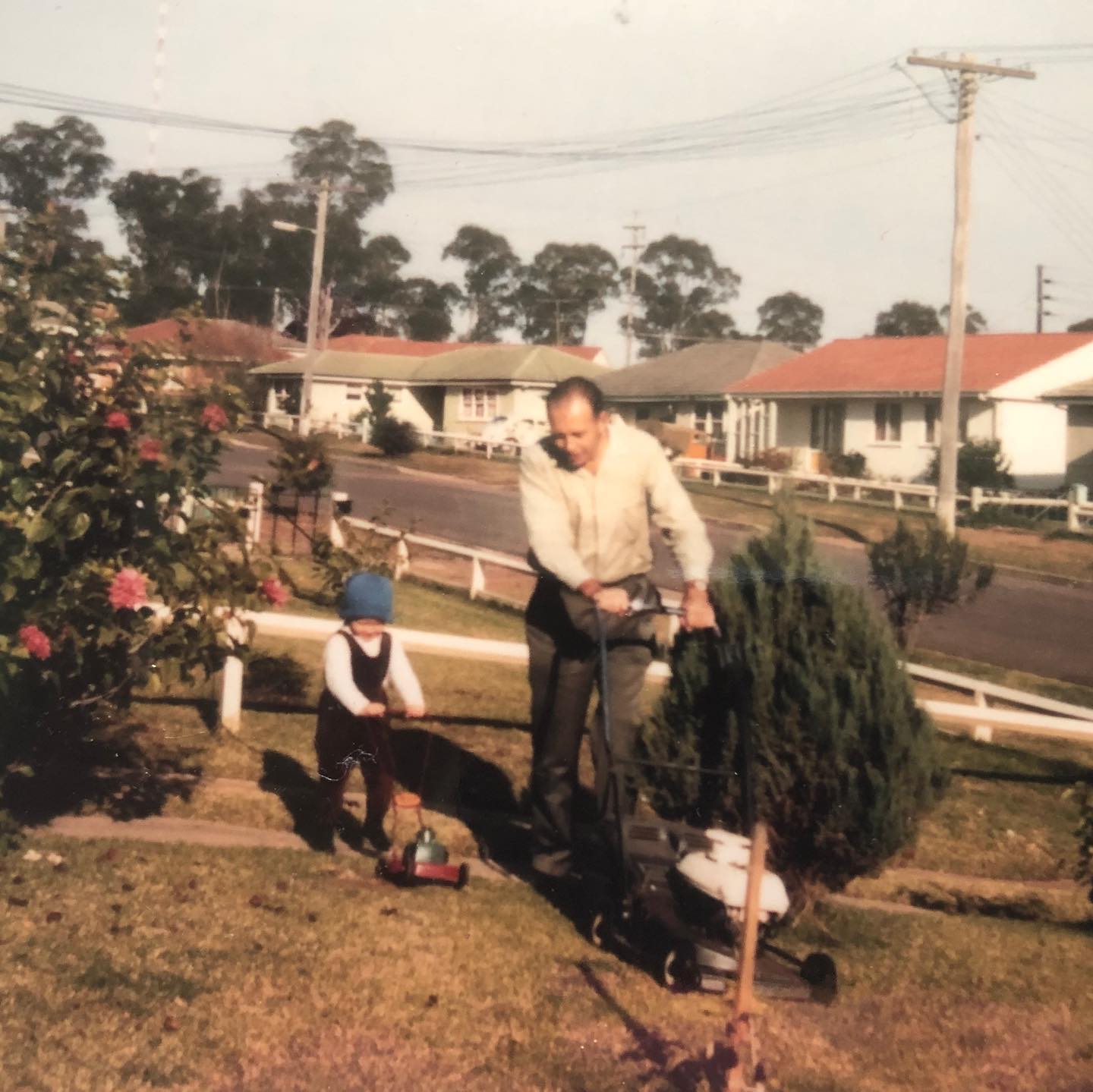
MP Anne Stanley mowing the lawn with her father, William John Mee, on Quist Avenue, Lurnea in about 1964. Gift of Anne Stanley, Liverpool City Library Heritage Collection.
In 1962, MP Anne Stanley moved to the new Housing Commission in Lurnea with her family. She recalls that her “parents were part of the scheme post-war to provide housing to the to the baby boomers. Basically, they were in Housing Commission accommodation in Crystal Street in Surry Hills, and they were successful in getting a loan to buy the house that we still live in.”
“So, in my street, the housing commission was marked with…if you had a brick house, you were buying the house and if you didn't, you were renting…the street was a mixture. There were some people who were renting, whose parents were in and out of work. Some people had lots of kids, there were people in the street that only had two like us. It was quite diverse, but it was quite neighbourly, like everybody talked to one and other, it didn't actually matter. That division wasn't obvious by how people interacted with each other. I suppose that's with the hindsight of adulthood, I understand just exactly what the division was. So yeah, and then there were schemes later, sort of in the late 70s, early 80s, where people could choose to buy the house and quite a number of people have.” – MP Anne Stanley, January 2023
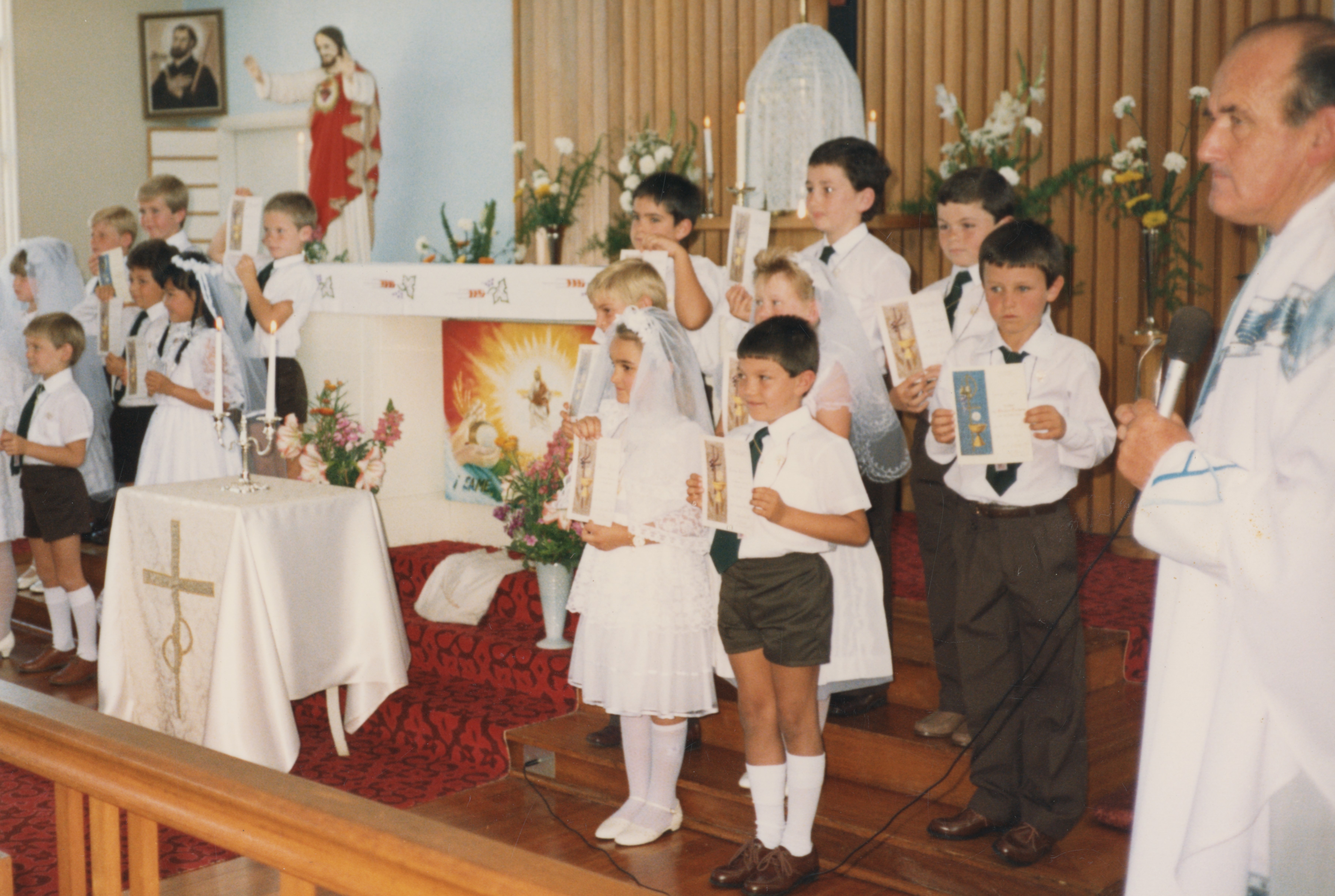
Holy Communion ceremony at St Francis Xavier’s Church, Lurnea on 1 November 1987. St Francis Xavier’s Church opened in 1965 and is located at 71 Webster Rd, Lurnea. Gift of Jadwiga Krejza, Liverpool City Library Heritage Collection.
Lurnea Community Hub, Phillips Park
Phillips Park has been the social centre of Lurnea since the 1920s. A store for the supply of the poultry farms was located on the site. It was a familiar site to see Mrs. James driving her cows down to the paddock on the northern side of Reilly Street and Webster Road, after they had been milked.
The poultry store was later converted into a Community Hall used for social and religious activities. A tennis court was also built on the site. Residents recall American Soldiers who were staying at Hargrave Park during World War II attending Saturday night dances.
In 1966, a purpose-built community hall was built. Lurnea Hall was one of the first four council-built community halls in Liverpool. Rugby League groups, Scouts, dancing schools, and the City of Liverpool Camera Club are some of the community groups who used the space over the years.
Lurnea Hall was renamed Bates Hall in 1984 in recognition of public service given to the community by Mr George Bates.
The same year, the tennis complex was renamed the Charles Hall Tennis Complex.
In 2022, Bates Hall was replaced with the Lurnea Community Hub.
Learn more about George Bates.
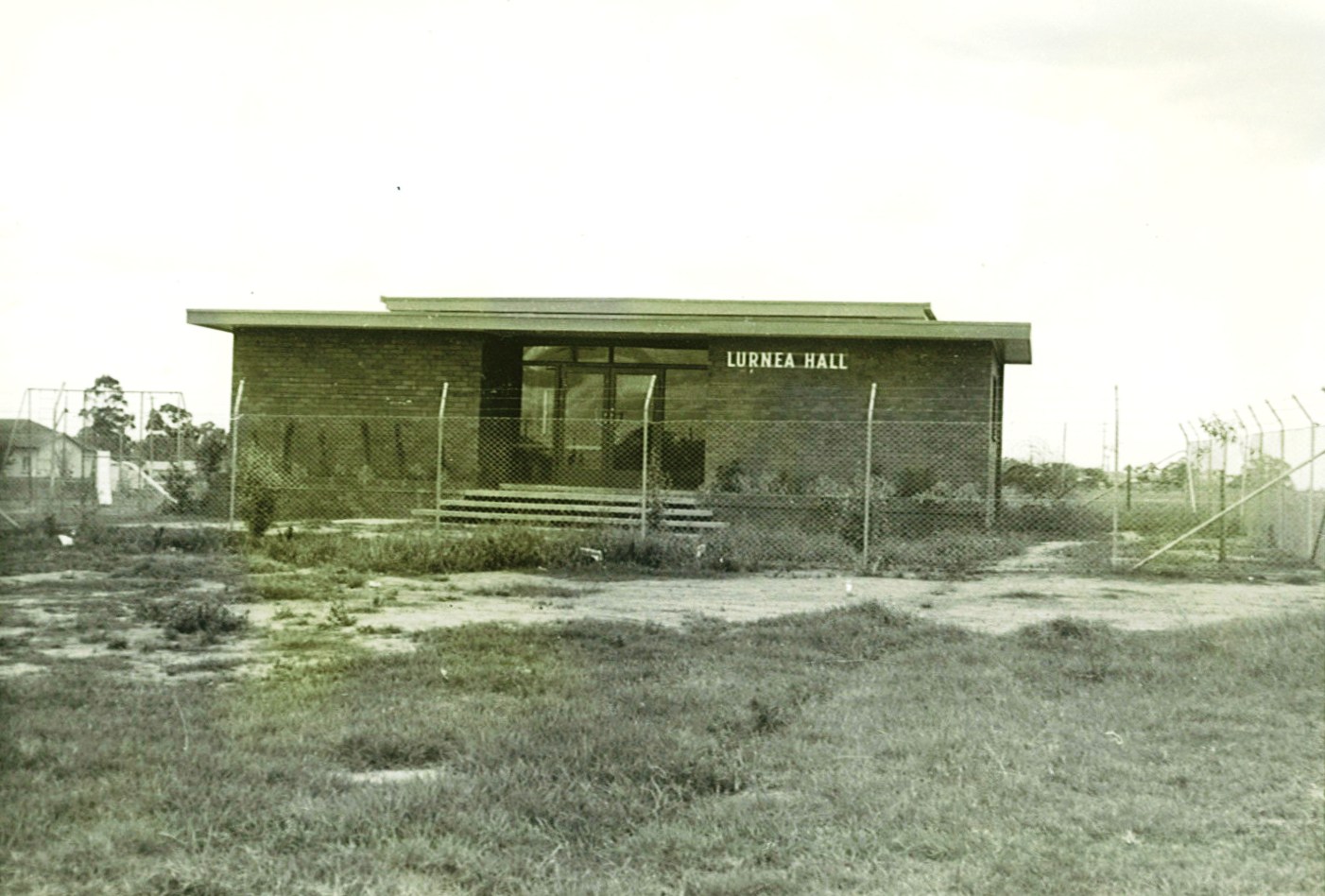 | 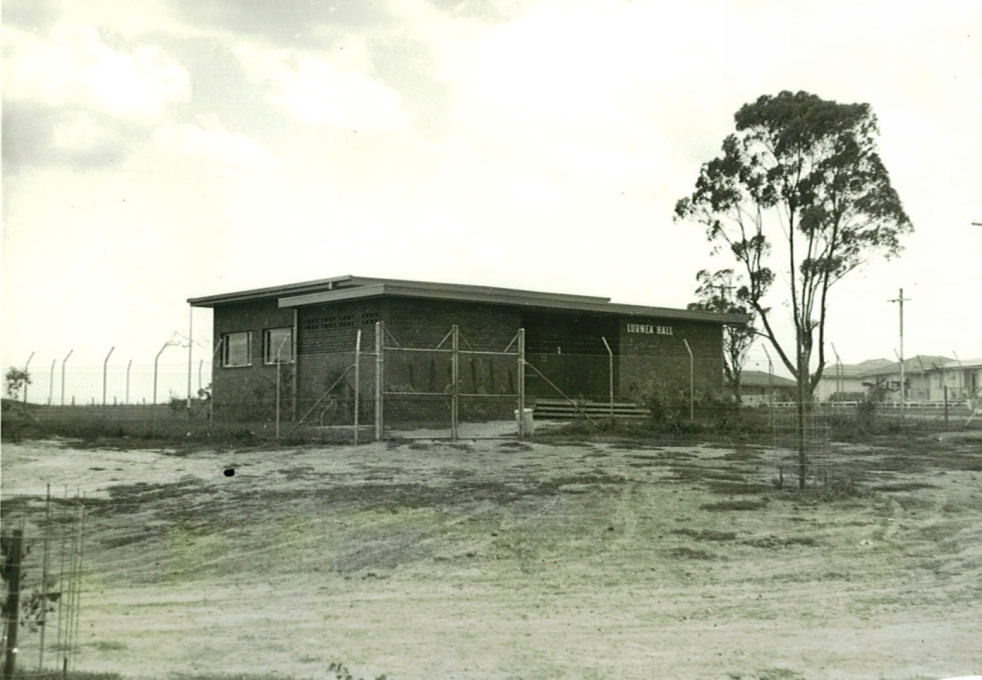 |
|---|
Lurnea Community Hall, March 1966. Photographer unknown. Liverpool City Library Heritage Collection.
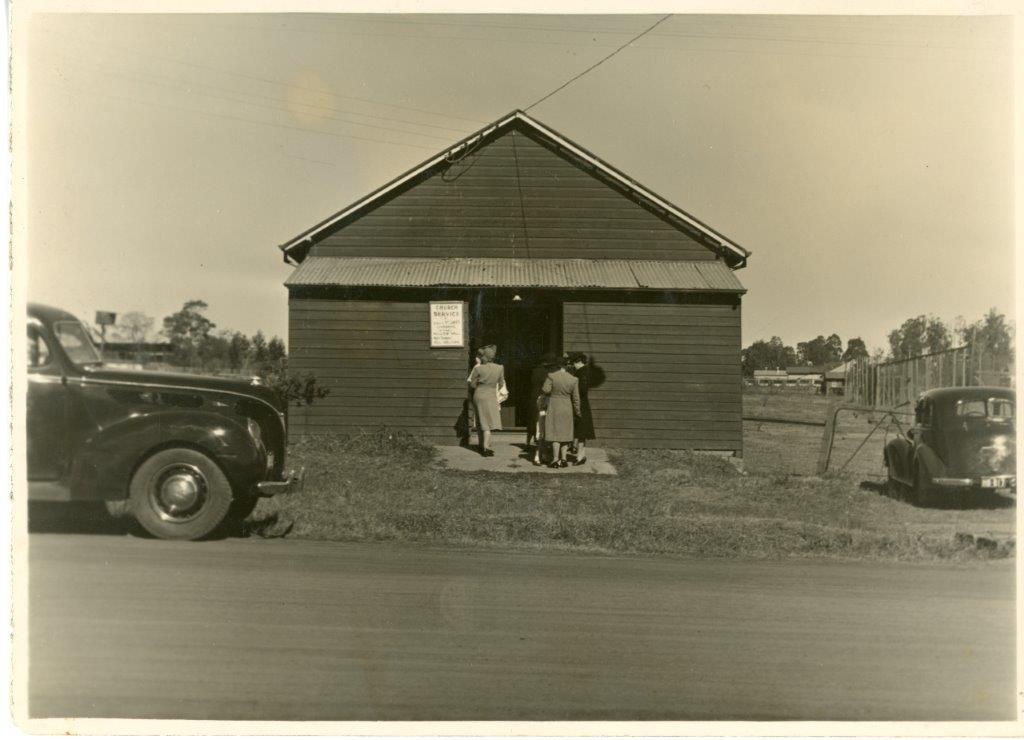
Hillview Hall, Reilly Street, Hillview, circa 1940s. Photograph by Clarence Phillips. Image courtesy of Margaret James and Julie-Ann Cowan, Liverpool City Library Heritage Collection.
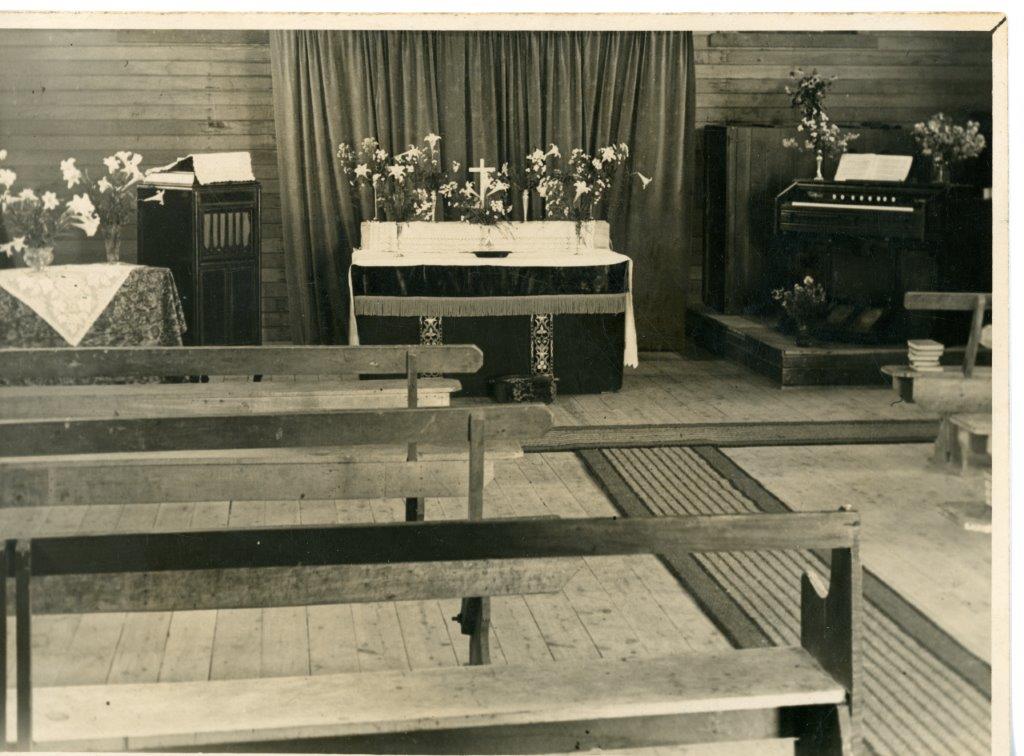
Hillview Church of England set up in Hillview Hall, Reilly St Hillview, 1940s. Services continued here until St John's Church of England was built in Lions Ave in 1960.
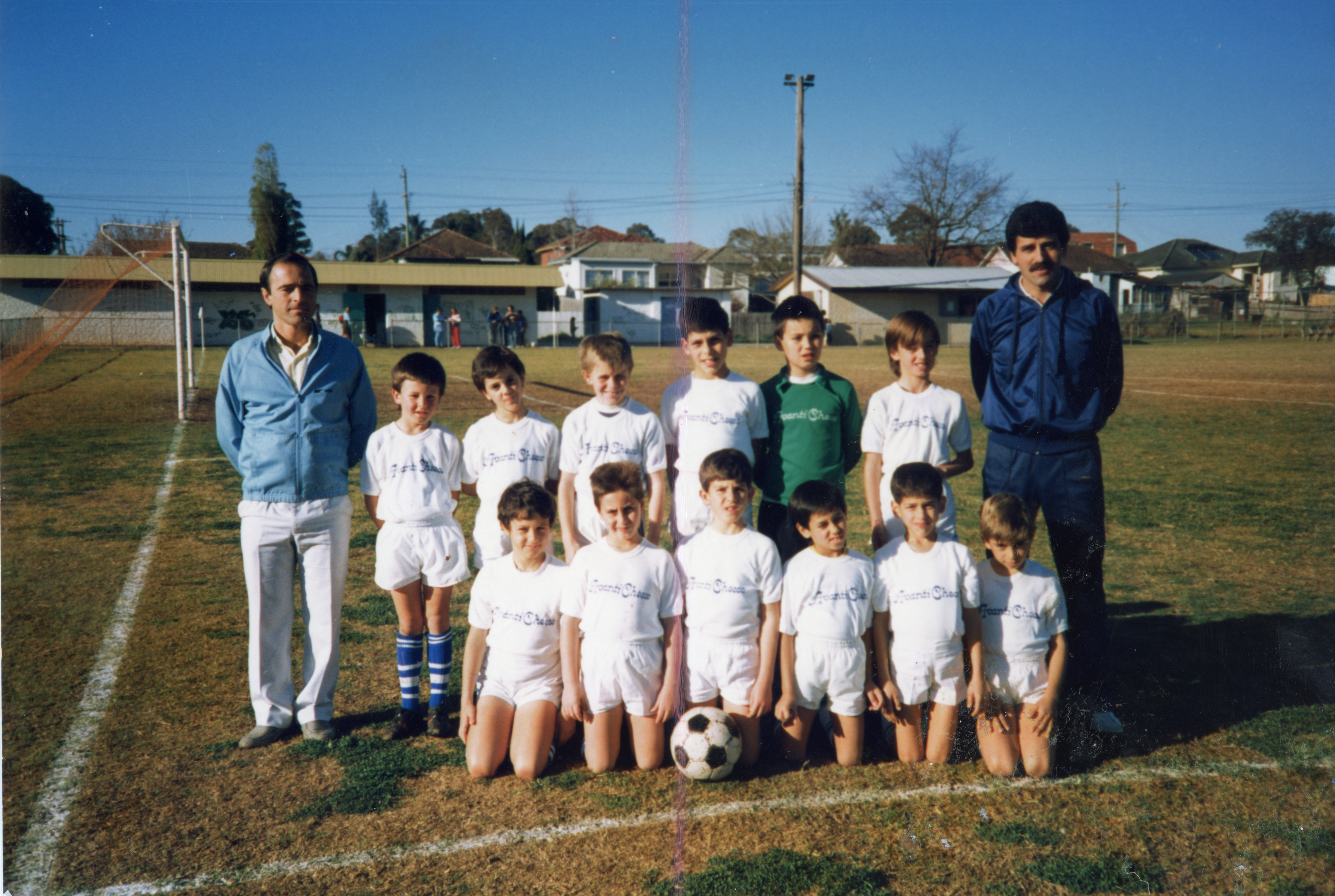
Group portrait of the under-sevens soccer team at Phillips Park, Lurnea, 1988. Gift of Jadwiga Krejza, Liverpool City Library Heritage Collection.
Lurnea Today
In the 2021 Census, Lurnea had a population of 10,109. 49.4% of residents were born in Australia. The largest proportion of residents born overseas were from Iraq (10.2%), Lebanon (6.3%), Vietnam (3.4%), Fiji (2.1%) and New Zealand (1.3%). After English the languages spoken at home were Arabic, Vietnamese, Serbian, Hindi and Spanish. The most popular religion was Islam (28.9%) followed by Catholicism (18.4%).
“I suppose the biggest changes around the suburb, particularly now, like in the last couple of months, is the number of houses that have been knocked down because the sizes of the blocks are huge. And so, they can put a number of townhouses or occupancies on blocks. So around me, there's about six houses currently that have all been demolished, and I assume in the next couple of months will start to be redeveloped.” – MP Anne Stanley, January 2023

Phillips Park Community Hub, Wonga Road Lurnea, April 2024.

17 Frazer Ave, Lurnea April 2024
106 Hill Road, Hillview, circa 1950. https://liverpool.spydus.com/cgi-bin/spydus.exe/ENQ/WPAC/ARCENQ?SETLVL=&RNI=698431
Clarence Phillips leans on the front fence of West Street, Hillview, circa 1950. https://liverpool.spydus.com/cgi-bin/spydus.exe/ENQ/WPAC/ARCENQ?SETLVL=&RNI=698238
Clarence Phillips’s truck loaded up with egg-carrying boxes on his property in Hillview, circa 1940s. https://liverpool.spydus.com/cgi-bin/spydus.exe/ENQ/WPAC/ARCENQ?SETLVL=&RNI=698208
Clarence William Phillips’s poultry farm at Hillview, circa 1936. https://liverpool.spydus.com/cgi-bin/spydus.exe/ENQ/WPAC/ARCENQ?SETLVL=&RNI=698259
Gordon Brain milking his cows at 107 Hill Rd, circa 1950s https://liverpool.spydus.com/cgi-bin/spydus.exe/ENQ/WPAC/ARCENQ?SETLVL=&RNI=698429
Group portrait of the under-sevens soccer team at Phillips Park, Lurnea, 1988. https://liverpool.spydus.com/cgi-bin/spydus.exe/ENQ/WPAC/ARCENQ?SETLVL=&RNI=697881
Hillview Church of England set up in Hillview Hall, Reilly St Hillview, 1940s. https://liverpool.spydus.com/cgi-bin/spydus.exe/ENQ/WPAC/ARCENQ?SETLVL=&RNI=698264
Hillview Estate Map https://liverpool.spydus.com/cgi-bin/spydus.exe/ENQ/WPAC/ARCENQ?SETLVL=&RNI=299376
Hillview Hall, Reilly Street, Lurnea, 1950s https://liverpool.spydus.com/cgi-bin/spydus.exe/ENQ/WPAC/ARCENQ?SETLVL=&RNI=698268
Holy Communion ceremony at St Francis Xavier’s Church, Lurnea on 1 November 1987. https://liverpool.spydus.com/cgi-bin/spydus.exe/ENQ/WPAC/ARCENQ?SETLVL=&RNI=697879
Learning Lurnea: The History of a Suburb, 2022 https://liverpool.spydus.com/cgi-bin/spydus.exe/ENQ/WPAC/ARCENQ?SETLVL=&RNI=697808
Letter head used by Robert Wheeler for his poultry farm business. https://liverpool.spydus.com/cgi-bin/spydus.exe/ENQ/WPAC/ARCENQ?SETLVL=&RNI=698734
[Liverpool subdivision plans] [cartographic material] https://collection.sl.nsw.gov.au/record/74VvdywD4xN3/ERQRpxJqZLrOb
Looking back at Liverpool an oral history - 1900-1960, Liverpool City Library. https://liverpool.spydus.com/cgi-bin/spydus.exe/ENQ/WPAC/DAENQ?SETLVL=&RI=284515
Looking from Jedda Road to West Street, Hillview circa 1955. https://liverpool.spydus.com/cgi-bin/spydus.exe/ENQ/WPAC/ARCENQ?SETLVL=&RNI=698202
Lurnea Community Hall, March 1966. https://liverpool.spydus.com/cgi-bin/spydus.exe/ENQ/WPAC/ARCENQ?SETLVL=&RNI=332947
Lurnea Public School, circa 1966. https://liverpool.spydus.com/cgi-bin/spydus.exe/ENQ/WPAC/ARCENQ?SETLVL=&RNI=232916
Margaret Dorothy Phillips and Clarence Pearce Phillips with Clifford Percival Jenner (child) at their home at West Street, Hillview in 1939. https://liverpool.spydus.com/cgi-bin/spydus.exe/ENQ/WPAC/ARCENQ?SETLVL=&RNI=698199
MP Anne Stanley mowing the lawn with her father, William John Mee, on Quist Avenue, Lurnea in about 1964. https://liverpool.spydus.com/cgi-bin/spydus.exe/ENQ/WPAC/ARCENQ?SETLVL=&RNI=698410
Parade day at Lurnea Public School, 1984. https://liverpool.spydus.com/cgi-bin/spydus.exe/ENQ/WPAC/ARCENQ?SETLVL=&RNI=697856
Sisters, 6-year-old Margaret James (nee Phillips) and 3-year-old Helen Phillips, ride their bicycles down West Street, Hillview, 1947. https://liverpool.spydus.com/cgi-bin/spydus.exe/ENQ/WPAC/ARCENQ?SETLVL=&RNI=698232
Weir Crescent, Lurnea, 1982. https://liverpool.spydus.com/cgi-bin/spydus.exe/ENQ/WPAC/ARCENQ?SETLVL=&RNI=697869
See something missing?
You know your suburb better than anyone. If you think an important part of your suburb’s history is missing, whether recent or distant, reach out to the Local Studies Team through our online Local and Family History enquiry form. We are always looking for new ways to bring the vibrant history of Liverpool to life!
